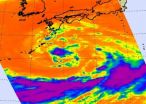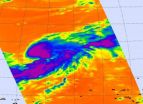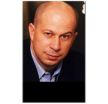(Press-News.org) A new model of obsessive-compulsive disorder (OCD) that mirrors both symptoms of the disease and the timing of its treatment in humans has been created by University of Chicago researchers, according to a new study.
Using the model, researchers isolated a single neurotransmitter receptor in a specific brain region responsible for their model's OCD-like symptoms, offering new insight into the cause of the disorder. Further research with the model may point the way to new treatments for both OCD and autism, said Nancy Shanahan, PhD, lead author of the paper in Biological Psychiatry.
"Treatment for these people is greatly needed, and there really are very few highly valid animal models of the disorder," said Shanahan, a postdoctoral researcher at the University of Chicago. "Having one that seems to mimic the disorder so well, especially in terms of the time course of treatments that work in humans, is potentially very useful for researching novel therapeutics."
Stephanie Dulawa, PhD, assistant professor in the Department of Psychiatry and Behavioral Neuroscience at the University of Chicago Medical Center and senior author of the study, said, "Our model can make accurate predictions about what you see in OCD, and that gives us confidence that the underlying neurobiology is likely to be similar between the model and the actual disorder."
About 2.2 million people in the United States have been diagnosed with OCD, according to the National Institute of Mental Health. OCD patients struggle with repetitive rituals (such as hand-washing, counting and cleaning) and unwanted thoughts that can cause severe anxiety.
Psychiatrists have found some success treating patients with a class of drugs called serotonin reuptake inhibitors (SRIs) initially developed for depression. However, these drugs fail to reduce symptoms in as many as 60 percent of OCD patients and require four to eight weeks of treatment for therapeutic effects to begin.
"OCD is very mysterious and very prevalent," Shanahan said. "The development of OCD-specific treatments will be an extremely important step toward helping these people and preventing the disorder's cost to society."
With an animal model that replicates at least some aspects of OCD, researchers can dig deeper into the specific neurotransmitters and systems involved in the disorder. In Dulawa's laboratory, a team led by Shanahan found inspiration in a drug that activates the 1b class of receptors for the neurotransmitter serotonin. Clinically, the drug is used to treat migraines, but it is also known to have the unintended effect of increasing anxiety and compulsions in people with OCD.
When the drug was given to mice, they showed highly repetitive patterns of locomotion when placed into an open arena. The drug-treated mice also exhibited deficits in prepulse inhibition, a form of startle plasticity thought to measure the brain's ability to filter out intrusive thoughts, which plague OCD patients.
To determine whether these drug-induced behaviors reflected the neurobiology of OCD, the researchers tested the same drugs used to treat the disorder in humans. After four weeks of pre-treatment with SRIs — the same duration required to see therapeutic effects in humans — drug-induced OCD behaviors were reduced in the mice. Shorter SRI treatment or treatment with other antidepressant drugs that do not work in humans with OCD were unsuccessful in reducing the behaviors caused by the drug.
"We have this time course that nicely parallels or mimics the human therapeutic response," Shanahan said. "In order to study how these drugs are working and the pathophysiology of the disorder, we need a model where this delayed onset exists. So we are really excited about that."
The researchers then looked for a specific brain region where activation of 1b serotonin receptors creates OCD-like symptoms. In humans, scientists have identified a region called the orbitofrontal cortex that is more active in OCD subjects. Again matching the human data, selectively activating 1b receptors in the orbitofrontal cortex with the drug was sufficient to produce the OCD-like symptoms in the mice.
"We found that the 1b receptors in the orbitofrontal cortex were really the critical receptors," Dulawa said. "It was very affirming to our research because it is the brain region most heavily implicated in OCD throughout all of the human literature."
The results offer promising ideas about developing new treatments for OCD. A drug that blocks the serotonin 1b receptors may be effective in reducing OCD symptoms; however, no such chemical is currently available, Dulawa said. Alternatively, treating OCD patients with an activator of these receptors may exacerbate symptoms initially, but have long-term benefits as the number of serotonin 1b receptors decreases from over-stimulation.
"These treatments could potentially be much more specific and work much faster," Dulawa said. "Now that we have this model, we actually could pursue these ideas for better treatments in a disease where there is only one successful therapy."
INFORMATION:
The paper, "Essential role for orbitofrontal 5-HT1B receptors in OCD-like behavior and SRI response in mice," was published online September 15, 2011 by Biological Psychiatry (doi:10.1016/j.biopsych.2011.07.032). In addition to Shanahan and Dulawa, authors include Lady P. Velez of the University of Chicago and Virginia Masten of University of California, San Diego.
Funding for this work was provided by the National Institute of Mental Health.
For more news from the University of Chicago Medical Center, follow us on Twitter at @UChicagoMed, or visit our Facebook page at http://www.facebook.com/UChicagoMed, our research blog at http://sciencelife.uchospitals.edu, or our newsroom at http://www.uchospitals.edu/news/.
END
Tropical Storm Roke is showing some signs of intensification on NASA infrared satellite imagery, as areas of strong convection and very cold cloud tops were spotted. Kadena Air Base in Okinawa is now in Roke's sights and should be making preparations.
NASA's Aqua satellite flew over Roke yesterday and the Atmospheric Infrared Sounder (AIRS) instrument showed powerful convection building around the storm's center and over the northern edge. Meanwhile, dry air is wrapping into the low-level center from the southwest, and limiting cloud development.
Infrared imagery provides ...
Infrared satellite imagery from NASA's Aqua satellite yesterday showed powerful convection building in the low pressure area known as System 94W and provided forecasters with an inside look that the low was strengthening. System 94W did intensify and became Tropical Storm Sonca today.
Infrared imagery is gathered by the Atmospheric Infrared Sounder (AIRS) instrument that flies on NASA's Aqua satellite. It provides valuable information to forecast organizations such as the Joint Typhoon Warning Center and National Hurricane Center about cloud temperatures and heights and ...
Cake Decorating Teacher's blog is dedicated to serving online viewers with a listing of easy to make recipes. Weekly blog posts include delicious dessert recipes at www.cakedecoratingteacher.com along with how to instructions for their readers convenience.
Life has never been this easy when it comes to finding free access to great baking recipes since the Internet and its listing of blog sites such as Cake Decorating Teacher. Posts can easily be viewed under the posts section of their website. To stay updated on the latest posts readers can subscribe to the blog's RSS ...
AMES, Iowa – Even though a dwarf galaxy clear across the Milky Way looks to be a mouse, it may have once been a bear that slashed through the Milky Way and created the galaxy's spiral arms, writes an Iowa State University astronomer in the journal Nature.
Curtis Struck, an Iowa State professor of physics and astronomy, uses a News & Views commentary in the Sept. 15 issue of Nature to add context and color to a study published in the same issue by a research team led by Chris W. Purcell of the University of Pittsburgh.
The Purcell group reports that the Sagittarius Dwarf ...
After nearly two years of committed planning and design, the 2011 Solar Decathlon Team Massachusetts heads to Washington, D.C. where its completed "4D Home" will participate alongside 19 other collegiate entries in this year's competition. A unique dwelling that boasts both affordable and sustainable design elements, the "4D Home" is fully solar-powered, cost-effective and energy-efficient.
"Team Massachusetts showcases public higher education at its best. The creation of this self-sustaining home designed and developed by students at Massachusetts ...
From the very beginning our philosophers and scientists realized that the key to great societies was wisdom. They saw that wisdom was real and that if only they could figure out what it is and how to teach it; they would be able to create wise societies. Ever since the times of Aristotle till today, man has been trying to figure out wisdom by putting wisdom under the microscope. As wisdom is an innate property of the pure self it is a secondary entity; just like fragrance is a property of the flower. It is exactly like a symptom of a disease. So by putting wisdom under ...
PHILADELPHIA--It is a commonly held that information on Wikipedia should not be trusted, since it is written and edited by non-experts without professional oversight. But researchers from the Kimmel Cancer Center at Jefferson have found differently, according to a study published online Sept. 15 in the Journal of Oncology Practice.
Reassuringly, they found that cancer information found on a wiki was actually similar in accuracy and depth to the information on a peer-reviewed, patient-oriented cancer web site. There is one caveat, however: they found that the information ...
Cincinnati, OH, September 16, 2011 -- Pharmaceutical poisoning remains a common childhood injury, despite years of concerted prevention efforts, such as improved safe guards on packaging. Over half a million children are exposed to pharmaceuticals each year. A new study soon to be published in The Journal of Pediatrics attempts to understand this growing problem to aid in the progress of reducing the number of childhood injuries due to pharmaceutical poisoning.
Dr. Randall Bond and colleagues from Cincinnati Children's Hospital Medical Center and the University of Cincinnati ...
Yuval Tal, founder of the global electronic payment provider Payoneer, will speak at the Take Charge 2011 Digital Commerce Summit from September 13 to 14. The conference, which will take place in Airport City, Israel, will feature the most cutting-edge ecommerce creations and trends for vendors and affiliates.
Attendees can expect to have a global experience, with potential for boosting online sales, taking advantage of new marketing, and improving conversion rates. Vendors and affiliates also will have the opportunity to network, sell and discover products, participate ...
The number of young children admitted to hospitals or seen in emergency departments because they unintentionally took a potentially toxic dose of medication has risen dramatically in recent years, according to a new Cincinnati Children's Hospital Medical Center study.
The rise in exposure to prescription products has been so striking that the Centers for Disease Control and Prevention has established the PROTECT Initiative, intended to prevent unintended medication overdoses in children.
Randall Bond, MD, an emergency medicine physician at Cincinnati Children's, will ...



